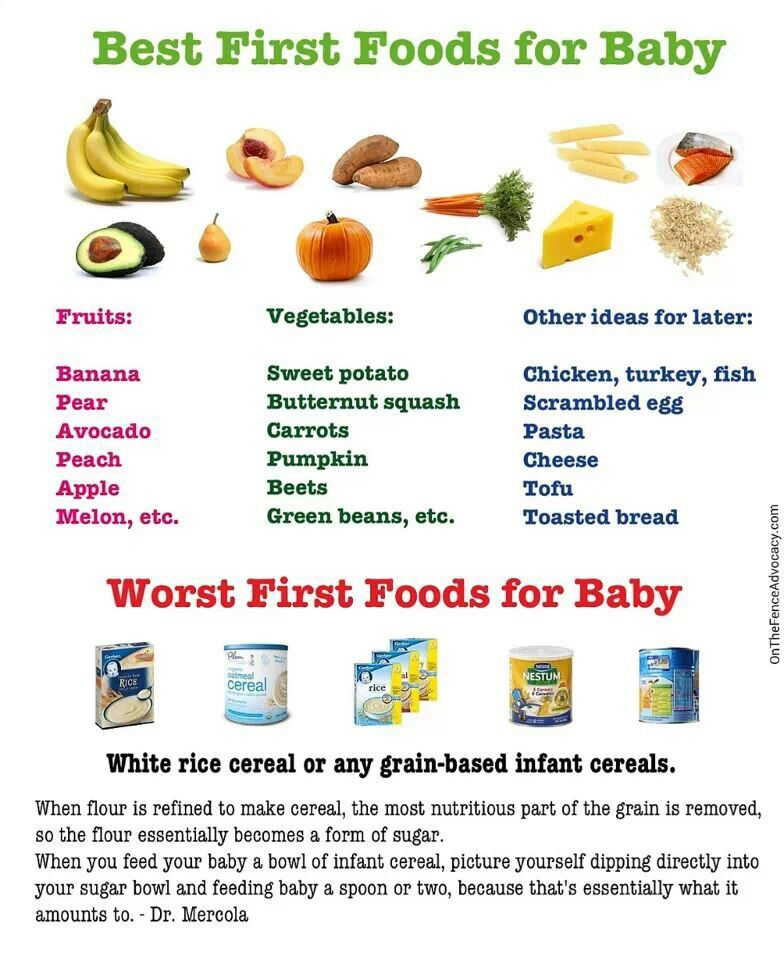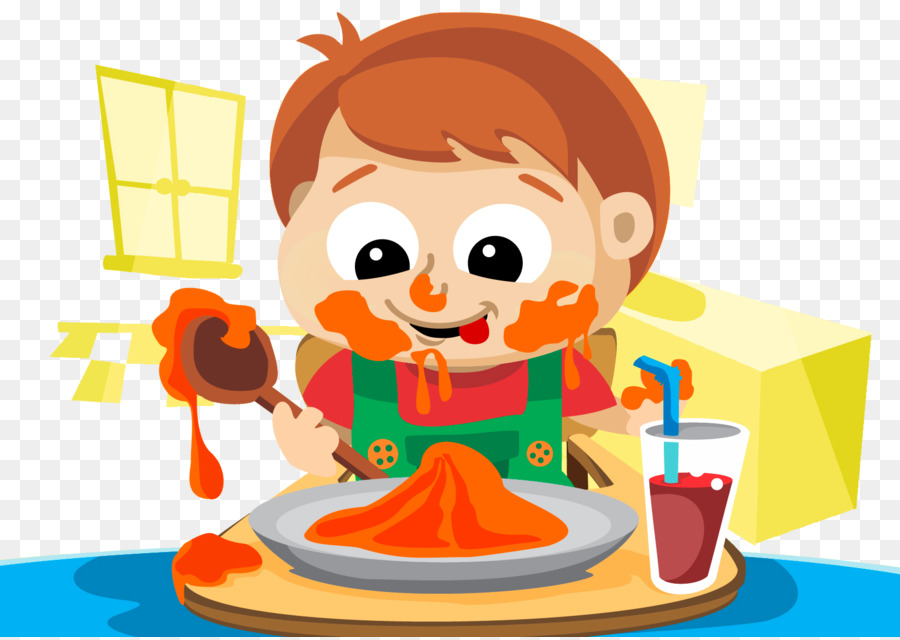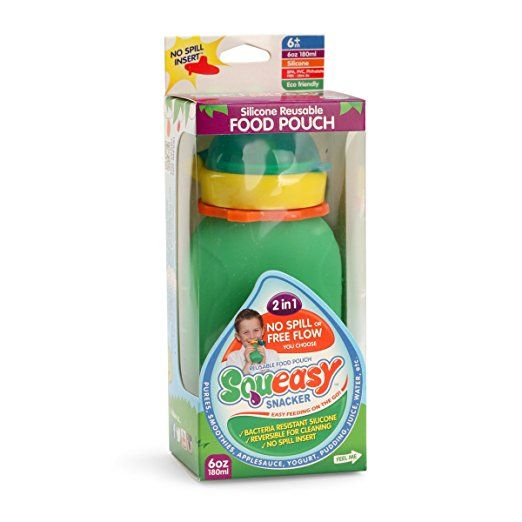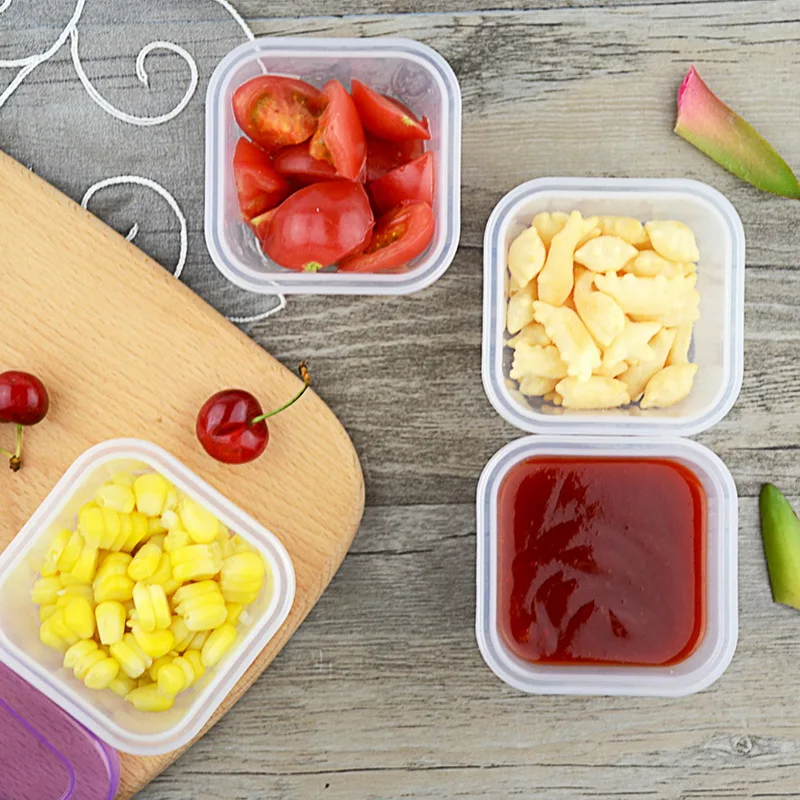Easy digest food for baby
Food For 6-8 Month Old Babies | Introducing Solids
These tips are brought to you by
Signs my baby is ready for solids?What if my baby refuses solid food?What about allergic reactions?Preparing food for babyBe prepared for mess!How to prevent your baby from chokingTop Tips
It is recommended that you start your baby on solids at around six months of age while continuing to breastfeed until twelve months or longer. At this age small amounts of cooled boiled water may also be offered in a cup.
It is recommended that you start your baby on solids at around six months of age while continuing to breastfeed until twelve months or longer. At this age small amounts of cooled boiled water may also be offered in a cup.
Signs my baby is ready for solids?
- From six months of age it is recommended to introduce your baby to solids.
- Your baby should be sitting up straight and have good head, neck and shoulder control by this time.
- Signs of readiness: an increased appetite; your baby is asking for more frequent milk feeds, showing more hand to mouth behaviour, showing interest in food, including the food on your plate.
Some babies will prefer to start with soft foods (mashed or grated) from a spoon and others will prefer to start with soft finger food. There is no set order for the best baby food to be introduced but it is strongly recommended that foods which include iron are included in the healthy diet.
Start with offering mashed foods that are easily digested which may include:
- vegetables (eg pumpkin, potato, sweet potato, taro) fruits (eg cooked pears/apple, ripe banana)
- well cooked rice or iron enriched rice cereal.

- coarsely mashed fruit and vegetables,
- well cooked: minced, stewed or grated meat (cook, freeze then grate)
- fish – bones removed
- legumes (eg lentils)
- pasta and bread (e.g. toast fingers and rusks)
Many babies will only eat a tiny amount to start with (less than ½ teaspoon) while other babies may surprise you by wanting more. Let your baby tell you when they are hungry and full. For example as they get full they don't show as much interest and may look away more. You can find great baby food recipes here.
What if my baby refuses solid food?
Not all babies are ready to start eating solid foods. Remember the food offered during the first couple of months is about helping your baby to learn new tastes, textures and smells. If baby is continuing to refuse food, try offering solids before giving the milk feed, when you are both relaxed and your baby is calm and alert, showing obvious signs of hunger.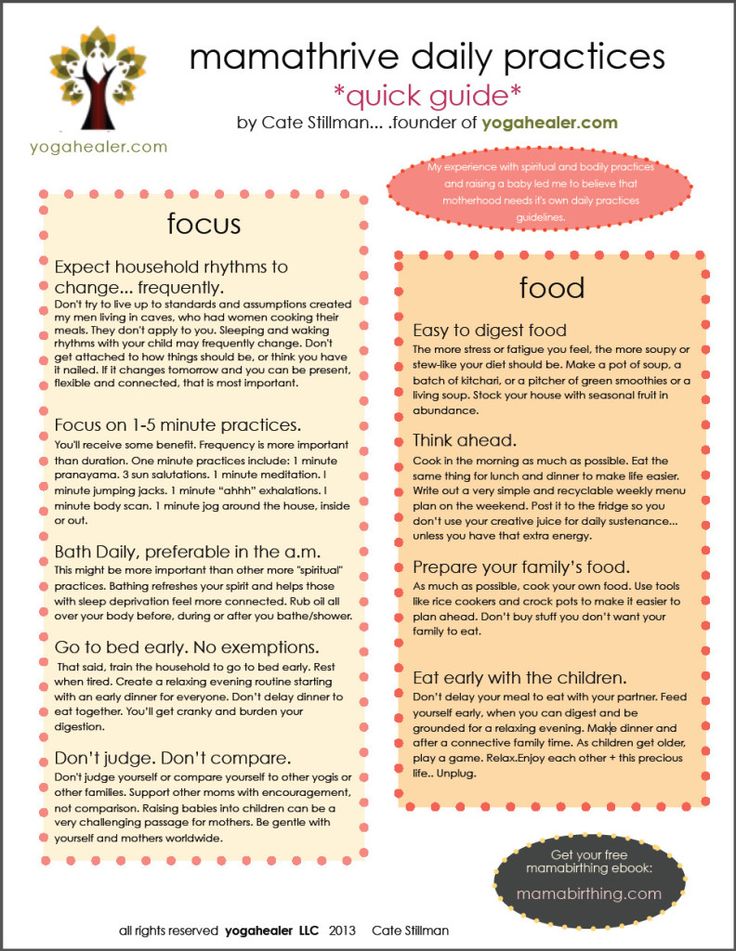 Eating is a social event and the more times you and or your family eat together the more your baby learns to eat & enjoy what the family is eating.
Eating is a social event and the more times you and or your family eat together the more your baby learns to eat & enjoy what the family is eating.
What about allergic reactions?
If allergy is a problem in your family seek advice from your child and family health nurses or doctor about baby allergies before starting solids.
Preparing food for baby
When preparing foods, food safety is important. Always wash your hands before you begin and ensure the area you are using to prepare the food is clean. You can also use different coloured boards for food types: one each for chopping meats, fruits and vegetables. If you’re using a microwave oven to heat baby’s food, always stir food thoroughly before serving, and check the temperature.
Be prepared for mess!
- Playing with food is your baby’s way of exploring new textures and learning to eat family foods
- To help your baby learn to eat different tastes and textures it is important for your baby to practice by offering a variety of foods in different sizes and texture
- Babies very quickly like to help feed themselves, so give them a spoon to hold from the start
How to prevent your baby from choking
- Always remaining with your baby while they are eating
- Using a safety harness when your baby is in a high chair or low chair to prevent your baby from moving around whilst eating
- Avoiding giving nuts, small hard foods (such as raw or undercooked pieces of hard fruit and vegetables, popcorn, rice cakes and cocktail frankfurts) and small slippery foods (such as whole grapes and whole cherry tomatoes)
TOP TIPS
- Until twelve months cow’s milk should only be used in small amounts to mix with family foods and in cooking
- Avoid nutrient poor foods with high levels of saturated fat, sugar, or salt (e.
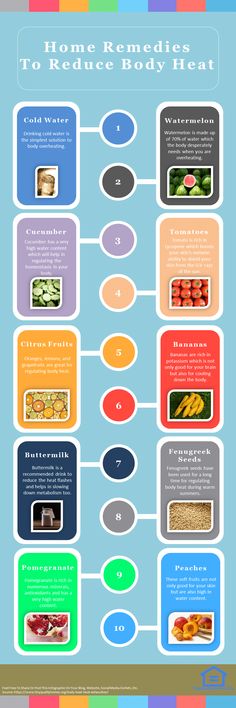 g. cakes, biscuits, confectionery and potato chips).
g. cakes, biscuits, confectionery and potato chips).
- If possible try and feed your baby with the rest of the family. Your baby will soon learn that meal times are not just about food but also about social interaction.
Anti-Inflammatory Baby Food | Foods to Help with Baby's Digestion
Previous | Next
Solid Foods, Inflammation, and Poop
Be Poop-pared
As your baby’s digestive system matures, they will start to experience different signs of solid food readiness. When you and your pediatrician have decided your baby is ready, you’ll notice their digestion go through several changes. In the transition from breast milk to solid foods, one of the first things most parents notice is that baby’s poop will change.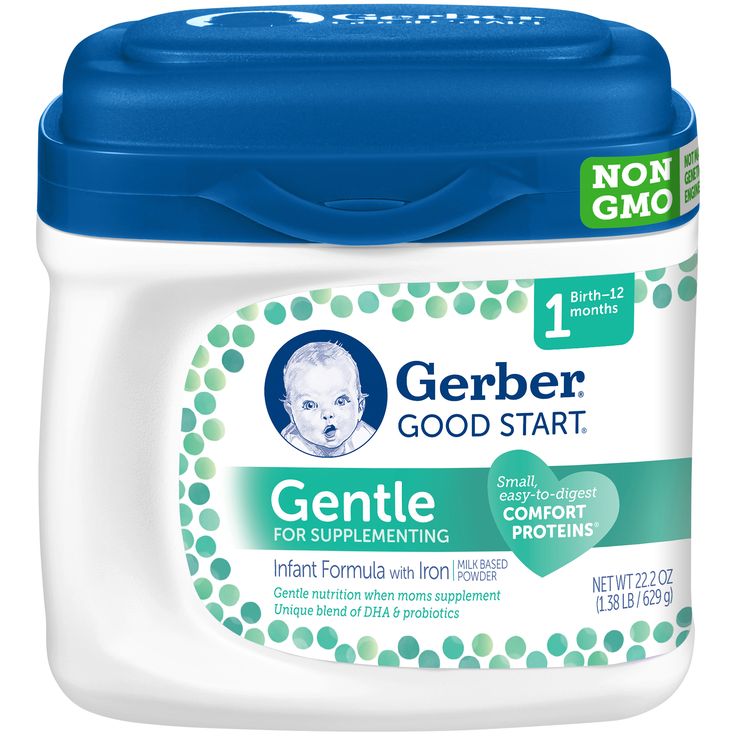 Yes, never before did you think you would talk and think and worry so much about poop.
Yes, never before did you think you would talk and think and worry so much about poop.
When your baby is on a liquid diet of breast milk, their gut is prepared and can easily absorb it. When you start introducing solid foods to your baby’s diet, their poop will start to reflect how easily food is passing through the digestive system. One of the reasons why pediatricians recommend introducing solid foods one at a time is so you can start to understand how your baby reacts to each food. Pay attention to your baby’s poop. It will show how easily your baby is digesting each food and help alert you to any possible allergic reactions.
Also if you are still breastfeeding, everything you eat gets passed to your baby. If your baby is constipated or has diarrhea, consult with your pediatrician to look at what you are eating that could be unintentionally causing a reaction.
Most Poop-ular Digestive Issues in Baby
1.) Diarrhea
Baby is experiencing diarrhea if they are suddenly having more bowel movements than usual and/or their stools are runnier than usual. Diarrhea in babies is very common, and most cases will clear up on their own. Contact your pediatrician if the diarrhea is accompanied with signs of dehydration, blood in stool, or high fever.
Diarrhea in babies is very common, and most cases will clear up on their own. Contact your pediatrician if the diarrhea is accompanied with signs of dehydration, blood in stool, or high fever.
If your baby is battling a typical case of baby diarrhea, you want to find binding foods to help firm up their poop. Also remember to continue to offer baby lots of liquids to keep them well-hydrated. Some foods to try:
-Bananas
-Applesauce
-Toast
-Oatmeal
Avoid:
-Sugary foods
-High-fat foods
2.) Constipation
If your baby is constipated with infrequent bowel movements or hard, painful stool, you want to find loosening foods to soften your baby’s poop, so it can easily pass through their digestive track. Here we want to offer foods high in fiber as well as keeping baby well-hydrated with lots of breast milk and/or water. Some foods to try:
-"P" Fruits: peaches, plums (and prunes), pears
These foods can also be accompanied with light belly massage (rubbing tummy gently in a circular motion, a warm bath, and exercise to help get things back on track.
Poop-tastic Foods for Baby's Digestive System
- Applesauce: Easy to digest, apples have been studied for their anti-inflammatory benefits and because they can help improve your gut microbiome. Applesauce may help alleviate symptoms of diarrhea and constipation because of its fiber. Apples contain phytochemicals called flavonoids. The polyphenols in apples actually form a protective layer on the stomach lining, helping to soothe your baby's upset stomach.
Apples are also rich in dietary fiber and pectin, which are essential for smooth bowl movements. This makes apples a great choice for babies whose digestive systems are maturing and need foods that are easy to digest.
- Oatmeal:Oatmeal is a nutritious, fiber filled meal for your baby that can also help with your baby’s digestion and provide anti-inflammatory benefits. Because oatmeal is high in dietary fiber, it is easy for baby to digest, facilitating regular bowl movements for your baby.
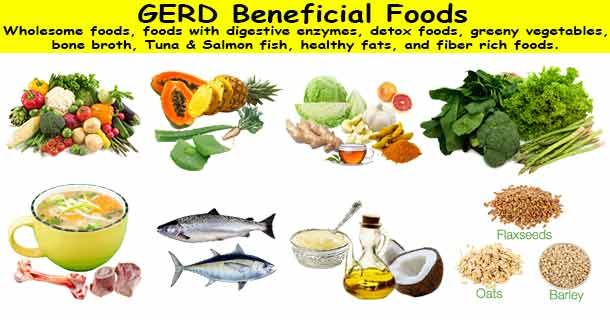 Furthermore, oats are rich in iron, magnesium and zinc – all important for your baby’s digestive system. To learn more, check out our post on the 5 Wonderful Benefits of Oatmeal for Baby.
Furthermore, oats are rich in iron, magnesium and zinc – all important for your baby’s digestive system. To learn more, check out our post on the 5 Wonderful Benefits of Oatmeal for Baby.
For a gentler transition, you can mix oatmeal with breast milk or formula to a thin consistency when your baby is starting solids, gradually increasing the texture as your baby grows.
- Bananas: Bananas are recommended to treat inflammatory bowel disease in the anti-inflammatory diet (Nutrition Journal, January 2014). They are also excellent at naturally treating diarrhea. As any fruit, bananas have natural sugars, so they are best given in moderation and balanced with plenty of whole grains and vegetables in baby's diet.
- Cinnamon: Cinnamon has long been used to regulate blood sugar but did you know that it also helps lower inflammation? Cinnamon has an anti-inflammatory component that can help your baby combat systemic inflammation.
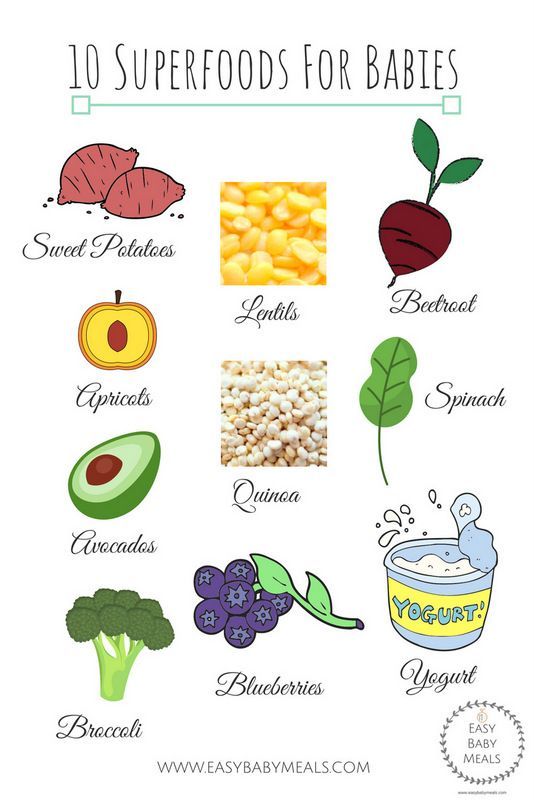 In small quantities, cinnamon can help decrease the inflammation in your baby. You can either sprinkle a pinch of organic cinnamon in your baby’s food or if you are breastfeeding, use it in your own food, and it will be passed through the breast milk to your baby.
In small quantities, cinnamon can help decrease the inflammation in your baby. You can either sprinkle a pinch of organic cinnamon in your baby’s food or if you are breastfeeding, use it in your own food, and it will be passed through the breast milk to your baby.
- Water: Not really a “food” but just as important for your baby’s digestion, so we wanted to make sure to mention it. Water will help flush your baby’s system and help them push out or rehydrate what has been lost. Make sure you keep your baby hydrated.
The AAP recommends waiting until at least 6 months of age to introduce solid foods. Because every baby is different, speak to your pediatrician first if you are wondering when is the best time to start solids with your baby. Watching baby discover the wonderful world of food is one of the joys of early parenthood, but it's important not to rush it. Breast milk and formula in those first months shape your baby’s healthy diet and digestion for years to come.
If you are looking for a gentle blend of foods to build baby's healthy gut, support digestion, and reduce inflammation, our certified PhD in Infant Nutrition designed our Anti-Inflammatory Tummy Variety Pack. Subscribe and save 20% + free shipping, so you have a constant supply on hand to soothe tummy troubles on the spot.
Leave A Comment
You Might Also Like...
Amara's Holiday Gift Guide
Toddlers Giving Back
Diet, Sleep, & Children: What’s the Connection?
Baby Food Just mix with breast milk, formula, or water!
Toddler Snacks Melt in mouth with no added sugar, ever.
Variety Packs Description text goes here.
★ Judge.me Reviews
Babe loves these!
My girl is just under 9 months old and she’s loving these. It took her a couple to get the hang of them but she handles them well now!
Best baby food
My 8 month old loves Amara baby food! She has been eating it since 6 months old. She has tried every meal and has loved them all!
We love these
My 11 month old and 3 year old absolutely love these. I actually have eaten myself because they’re delicious. Not only are they delicious, the ingredients and nutritional value really stood out to me.
Twins love these!
My 14 month old twins absolutely love these. Highly recommend
Can’t live without
This is both my daughters go to snack. They satisfy them at any age! My girls are 3 and 7 yo and this is the one snack I don’t feel guilty about giving them.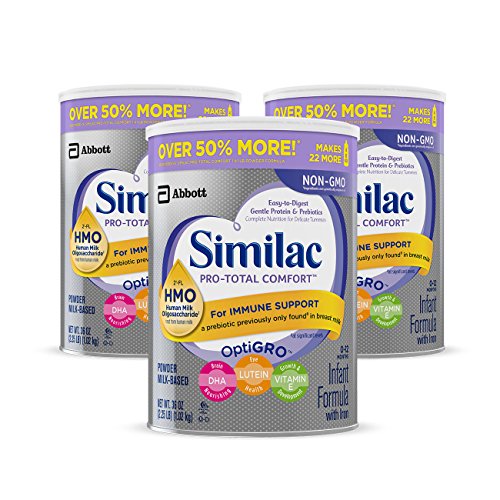
Load More Reviews
Nutrition of children in the postoperative period
Any surgical intervention is a serious stress. Traumatic damage to the child's body (regardless of the cause) provokes rapid negative changes in vital functions, which over the next few hours, progressing, become life-threatening and require urgent intensive care. In critical conditions, energy costs increase sharply (by 50-150%), which are covered by the supply of nutrients in the human body (proteins, fats, carbohydrates, microelements). nine0003
Increased energy expenditure reduces the supply of these nutrients, which must be compensated by adequate nutrition. An acute deficiency of nutrients and energy leads to a worsening of the condition, makes the child's body susceptible to the development of infectious complications, which leads to an increase in the length of stay in the hospital. The selection of optimal nutrition is the most sparing method for correcting disorders that occur after surgery.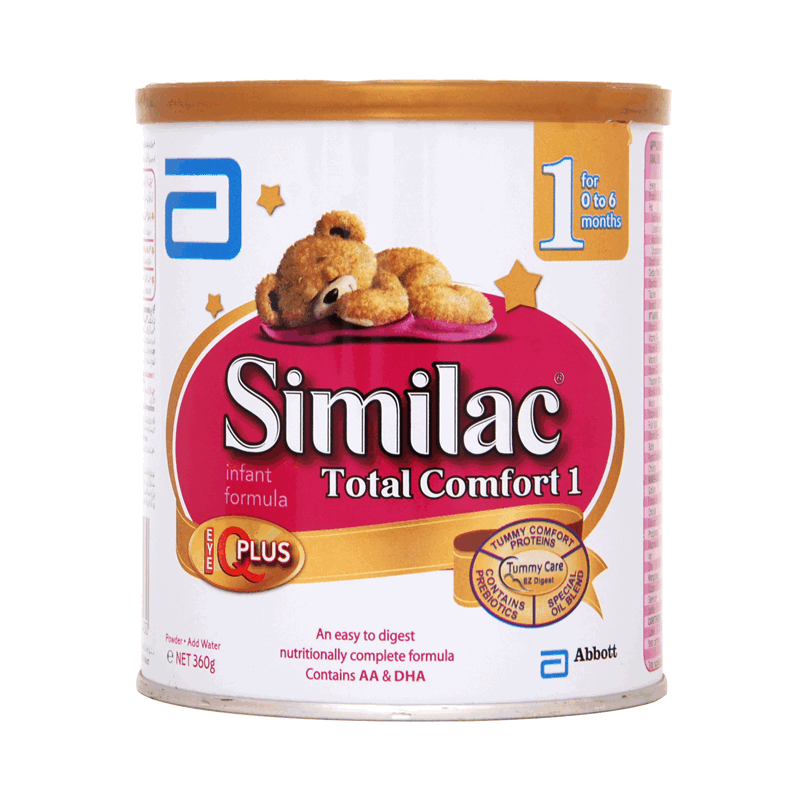 nine0003
nine0003
Nutrition in the postoperative period should be high-calorie, rich in vitamins, easily digestible. At the same time, in the first days after the operation, it is necessary to limit nutrition, taking into account the nature of the intervention and the degree of the surgical injury. After operations not related to the digestive organs, children, in most cases, are prescribed a regular common table.
After operations on the digestive organs, when normal food intake is impossible, difficult or contraindicated, the operated child is prescribed a diet that ensures maximum unloading and sparing of the digestive organs, preventing intestinal swelling. The child is fed 6 - 8 times a day. The food consists of liquid and jelly-like dishes (weak broth, rice water with cream, compote, liquid berry jelly, rosehip broth, fruit jelly, tea). The amount of table salt is sharply limited. nine0003
Then the diet is gradually expanded and the child is given liquid pureed cereals boiled in water with 1/4 - 1/2 part of milk, slimy cereal soups on vegetable broth, steam protein omelet, steam puree or soufflé from lean meat or fish, jelly, mousse from non-acidic berries, applesauce. Such a diet is prescribed for 2 to 4 days.
Such a diet is prescribed for 2 to 4 days.
After that, the child is prescribed a diet that serves to further expand the diet and transition to a physiologically complete diet. Food is cooked in pureed form, boiled or steamed. The child is allowed: crackers from premium wheat bread, soups-puree from vegetables, cereals, meat, poultry, fish; meat - lean beef, rabbit, skinless chicken; fish - cod, pike perch, pike; steam dishes from cottage cheese, sour-milk drinks; omelets. After that, the child is transferred to a common table. nine0003
However, existing treatment tables do not correspond to modern ideas about the child's needs for many vitamins and minerals; their long-term use reduces the protective properties of the body, the availability of vitamins, disrupts the adequate functioning of the immune system. Over the past decade, there has been a sharp increase in interest in the problem of nutritional support for critically ill children.
Today, for the nutrition of children in serious condition, medicine has all the necessary substances in the form of therapeutic mixtures, which are prepared using a special technology in industrial conditions.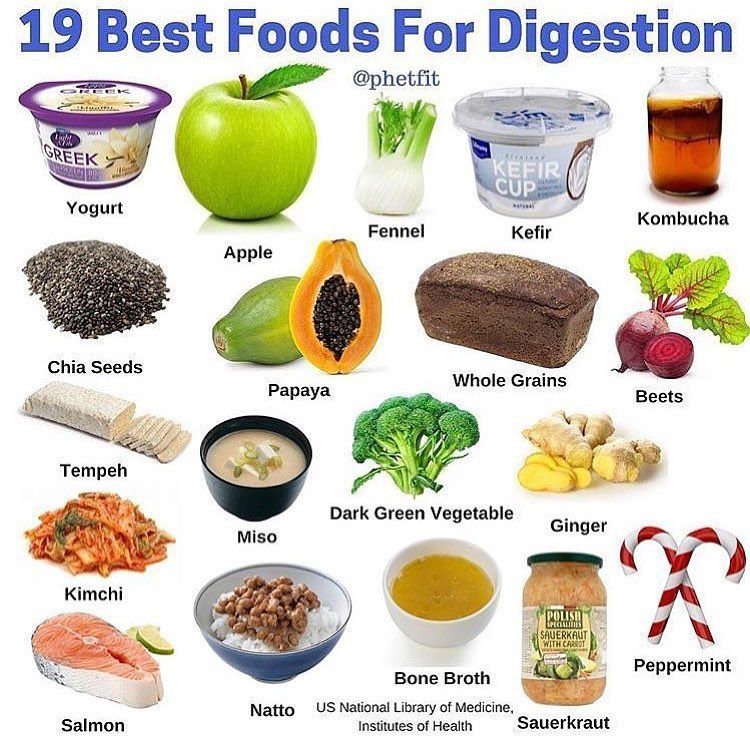 These products almost completely allow you to provide a sick child of any age with proteins, fats, carbohydrates, as well as vitamins and minerals; they are hypoallergenic and provide functional rest to the internal organs. nine0003
These products almost completely allow you to provide a sick child of any age with proteins, fats, carbohydrates, as well as vitamins and minerals; they are hypoallergenic and provide functional rest to the internal organs. nine0003
Formula feeding is considered as part of the treatment of critically ill children and can save the lives of many patients. Optimally selected nutrition contributes to the restoration of altered metabolism, has a protective effect, allows not only to support the needs of a sick child in nutrients, but is also an independent healing factor.
Healthy nutrition of children from one to three years. Nutrition of a child from 2 to 3 years old
Every year the diet of a child is getting closer and closer to that of an adult. Already a year after birth, the digestive system becomes much more mature, motor and cognitive activity and energy consumption increase markedly. However, the digestive functions of the stomach, intestines, liver and pancreas at this time have not yet reached full maturity.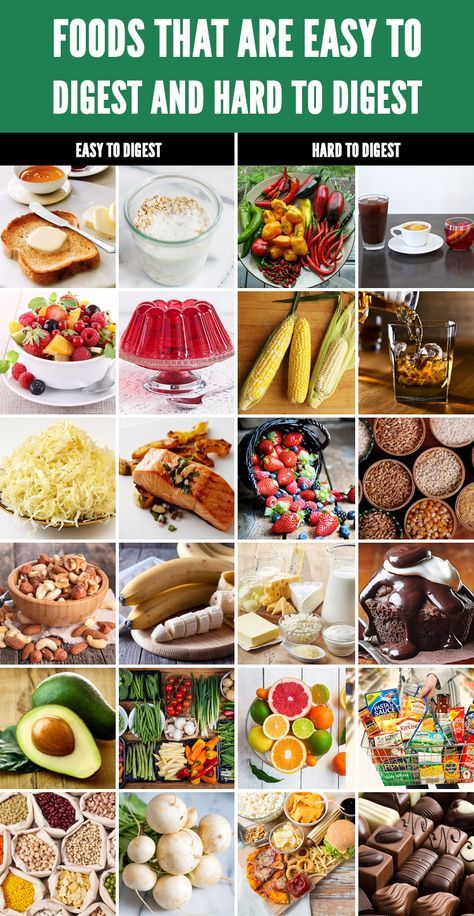 It is often at this age that various chronic diseases of the digestive system in children originate, their general physical development is disturbed, and their ability to learn is reduced. Therefore, parents need to pay special attention to the quantity, quality, composition of nutrition, and the mode of eating. nine0003
It is often at this age that various chronic diseases of the digestive system in children originate, their general physical development is disturbed, and their ability to learn is reduced. Therefore, parents need to pay special attention to the quantity, quality, composition of nutrition, and the mode of eating. nine0003
How much food per day does a child from 1 to 3 years old need? A child who has crossed the one and a half year mark needs about 1400-1500 kcal, and a three-year-old needs 1550-1600 kcal per day. As for the division of the daily volume (including caloric content) into separate feedings, it is possible to distribute everything more or less evenly - breakfast and dinner 25% each, lunch - 35%, afternoon tea - 15%.
Of course, the amount of food depends on the appetite of children. If the child has a good appetite, do not abuse it, do not accustom him to excessively plentiful food. Sooner or later, this will lead to excess fat deposition and a violation of the health of the child.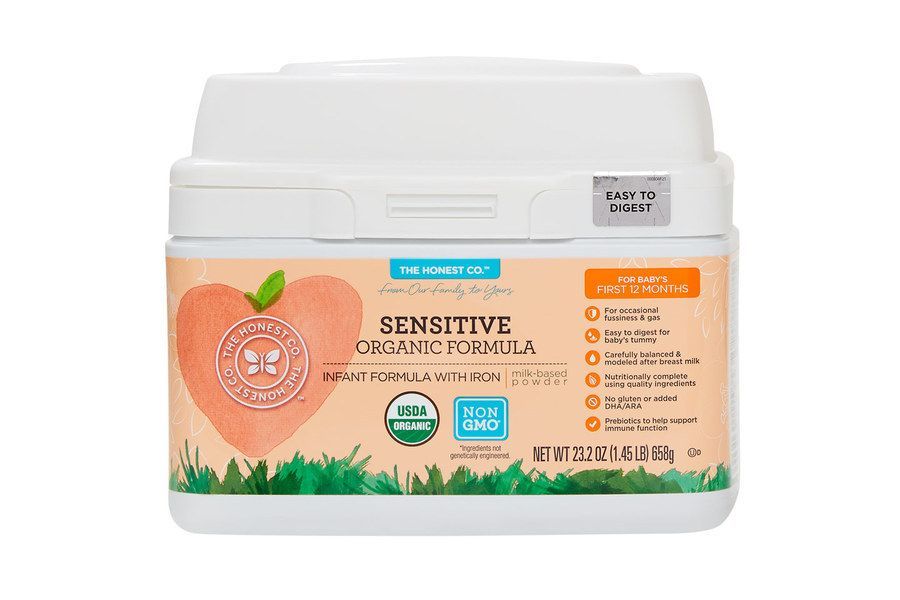 If the appetite is reduced and the child does not always eat the food offered to him in sufficient quantities, then he needs to temporarily organize the fifth meal as an additional dinner at 21 o'clock or an early breakfast if the child wakes up too early - at 5-6 o'clock in the morning. For an additional meal, it is usually recommended to give a glass of warm milk, kefir or yogurt with a cookie or a piece of bun. nine0003
If the appetite is reduced and the child does not always eat the food offered to him in sufficient quantities, then he needs to temporarily organize the fifth meal as an additional dinner at 21 o'clock or an early breakfast if the child wakes up too early - at 5-6 o'clock in the morning. For an additional meal, it is usually recommended to give a glass of warm milk, kefir or yogurt with a cookie or a piece of bun. nine0003
How to cook food for a child under 3 years old
An important point in the nutrition of children 1-3 years old is the requirements for culinary food processing. Up to a year and a half, soups and cereals are prepared pureed, and meat and fish - in the form of soufflés, steam cutlets, meatballs. Vegetables and fruits are also given mostly in the form of puree, although small shredding is sometimes suitable. From one and a half to three years, special mechanical and thermal processing of food is still relevant - although not as thorough as before. Well-boiled cereals, tender casseroles and other dishes of a more or less dense consistency are gradually replacing mashed potatoes and soufflés, traditional for an earlier age, from the baby's diet.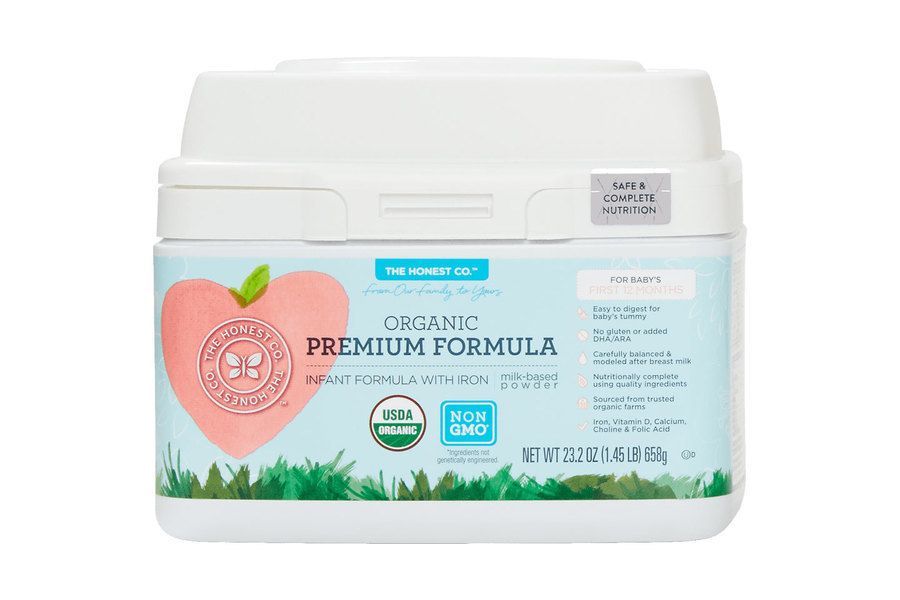 Most of the second courses are still cooked by boiling and stewing, but the first fried ones, for example, low-fat cutlets, also appear. nine0003
Most of the second courses are still cooked by boiling and stewing, but the first fried ones, for example, low-fat cutlets, also appear. nine0003
In the nutrition of children, it is good to use specialized products of industrial production. These are dry instant cereals, dry milk drinks, canned meat, fish and vegetables, fruit purees, juices. Such products solve a lot of problems: save parental time, guarantee the optimal composition of nutrients, environmental and epidemiological safety.
A child's diet after a year
Food is digested in the child's stomach on average within 3-4 hours, so the intervals between meals should be approximately equal to this time. Feeding hours should be constant, deviations from the set time should not exceed 15-30 minutes. It is important to pay attention to the inadmissibility of taking any food between feedings, especially sweets. If we talk about the frequency of nutrition, it is recommended to feed the child four times a day. However, for children 1-1. 5 years old, the fifth (night) feeding is also allowed. nine0003
5 years old, the fifth (night) feeding is also allowed. nine0003
Children should receive high-protein food (meat, fish) in the first half of the day, as it takes a long time to digest in the stomach, and in the second - lighter (milk-vegetable, carbohydrate).
And now let's look at what products and in what quantities a child aged one to three years needs .
1. Milk
Of course, milk still has an important place in the diet of a child who has passed the age limit. A baby aged 1-3 years must necessarily receive 400-600 ml of dairy products per day (including those used to prepare various dishes). Milk is the main source of easily digestible calcium salts and an important source of vitamin B2, substances so necessary for the growth of the child. Milk, kefir, yogurt should be included in the diet of children daily, and cottage cheese, cream, sour cream and cheese can be used after one or two days, but in larger quantities, respectively. nine0003
2.
 Meat
Meat According to children's dieticians, at this age, most of all proteins that come with food should be of animal origin. This contributes to high protein digestibility and nitrogen retention in the body. The exceptional importance of the latter for the baby's body is evidenced by at least the fact that without nitrogen the synthesis of DNA and RNA is impossible - compounds that control all biochemical processes occurring in the human body. The most important source of animal proteins is meat, but not all of its types are useful for children 1.5-3 years old. So, pork and meat of some birds (ducks, geese) contain an excess of refractory animal fats, which overload the child's digestive system. Therefore, it is better to choose lean beef and veal, as well as chicken, chicken, turkey, and rabbit meat. nine0003
3. Fish
Fish is a very useful product for children from one year old. Fish protein is complete and easily digestible. During the week, the child can cook meat dishes for four or five days and fish for two or three days. If meat and fish are given on the same day, their portions are reduced. It is better to use low-fat varieties of sea and river fish (perch, cod, hake, sea bass, etc.).
If meat and fish are given on the same day, their portions are reduced. It is better to use low-fat varieties of sea and river fish (perch, cod, hake, sea bass, etc.).
Many parents ask about the benefits of red and black caviar. Undoubtedly, this product has a high nutritional value. All types of caviar are rich in protein, fat and fat-soluble vitamins A and D. However, caviar should be given to children little by little and infrequently, as it contains a lot of salt. nine0003
4. Eggs
Eggs are of great importance in the nutrition of children, as they contain many highly digestible nutrients: proteins are digested by 96-97%, fats - by 95%. The egg yolk contains a complex of fat-soluble vitamins A, D, E, phospholipids and various minerals and trace elements. However, despite the usefulness of eggs, they should not be abused in a child's food, as they can cause allergic reactions. Eggs are used only in hard boiled form or in the form of various dishes (omelet with milk or fresh vegetables, egg salads, cheesecakes, etc. ), but not raw. nine0003
), but not raw. nine0003
5. Fat products
For children from one year old, butter and vegetable oils (sunflower, corn, olive, etc.) are used as fat sources. Vegetable is a rich source of vitamin E and polyunsaturated fatty acids, and butter is vitamin A. Oils are best used in their natural form: butter in sandwiches and ready-made vegetable purees or boiled cereals, and vegetable for dressing salads, vinaigrettes, and the same ready-made cereals or mashed potatoes . Children 1-1.5 years old need up to 12-15 g of butter and 3-5 g of vegetable oil per day, and 1.5-3 years old, respectively, up to 17 g and up to 6 g per day. nine0003
6. Bread and cereals
Cereals, bread and bakery products are included in the mandatory daily diet of a child 1-3 years old, providing the body with carbohydrates and proteins. At the age of 1-1.5 years, oatmeal and buckwheat are the most important cereals, but others are quite acceptable - barley, barley, wheat, etc. In the diet of three-year-old children, rice, buckwheat, oatmeal and semolina are used.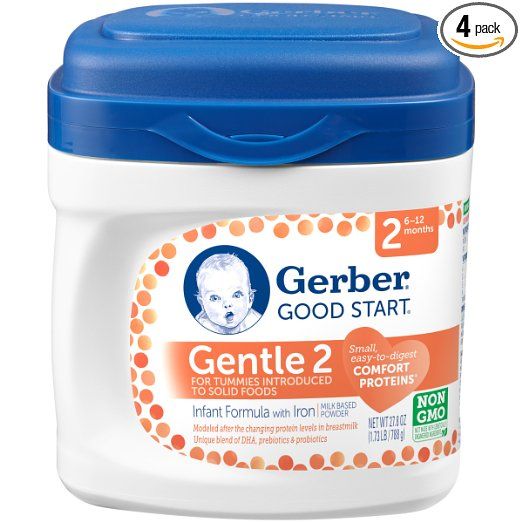 Porridges can be cooked with or without milk, with the addition of vegetables or fruits. For example, oatmeal with apple, raisins or banana, rice porridge with pumpkin or carrots, buckwheat porridge with apple are very healthy and tasty. In total, a child needs 15-20 grams per day. nine0003
Porridges can be cooked with or without milk, with the addition of vegetables or fruits. For example, oatmeal with apple, raisins or banana, rice porridge with pumpkin or carrots, buckwheat porridge with apple are very healthy and tasty. In total, a child needs 15-20 grams per day. nine0003
When choosing bakery products, it is better to give priority to products made from wholemeal flour, which is rich in B vitamins and dietary fiber that stimulates the intestines. Children 1-1.5 years old need 30-40 g of bakery products per day, 1.5-3 years old - 50-100 g per day.
7. Vegetables and fruits
Fruits, berries, vegetables and herbs are an essential part of baby food. They are an indispensable source of vitamins C, P, provitamin A (carotene), easily digestible carbohydrates - glucose and fructose, organic acids, pectins and dietary fiber, some minerals and trace elements. nine0003
In the daily diet of a baby 1-3 years old, there should be enough fresh vegetables (1-1. 5 years - up to 200-250 g, 1.5-3 years - up to 350 g), as well as fruits and berries - (1- 1.5 years - up to 100 g, 1.5-3 years - up to 130-200 grams). They are useful both in their raw form, providing a good workout for the chewing apparatus and gastrointestinal tract, and in the form of freshly squeezed juices rich in vitamin C. A child of 1-1.5 years old needs about 80-100 ml per day, and 1.5- 3 years - 100-150 ml of juice.
5 years - up to 200-250 g, 1.5-3 years - up to 350 g), as well as fruits and berries - (1- 1.5 years - up to 100 g, 1.5-3 years - up to 130-200 grams). They are useful both in their raw form, providing a good workout for the chewing apparatus and gastrointestinal tract, and in the form of freshly squeezed juices rich in vitamin C. A child of 1-1.5 years old needs about 80-100 ml per day, and 1.5- 3 years - 100-150 ml of juice.
The most commonly used vegetables are potatoes, carrots, cabbages, turnips, beets, marrows, pumpkins and tomatoes. Quite relevant (in the absence of specific contraindications) are garden and wild greens - dill and lettuce, spinach and parsley, sorrel, green onions and garlic, wild garlic, nettle. From fruits, apples, pears, plums, bananas, citrus fruits, tropical fruits are useful for children. Of the berries, raspberries and black currants, chokeberries, gooseberries and sea buckthorn, as well as blueberries, lingonberries, and cranberries are recommended. Gradually and carefully introducing unfamiliar fruits, berries and vegetables into the baby's diet, be careful - in cases where the child has a skin or other allergic reaction, exclude the product from the child's diet. nine0003
Gradually and carefully introducing unfamiliar fruits, berries and vegetables into the baby's diet, be careful - in cases where the child has a skin or other allergic reaction, exclude the product from the child's diet. nine0003
In the nutrition of children, it is useful to use all seasonal fruits, berries, vegetables and herbs in their natural form, as well as in the form of juices and purees; in winter, canned juices and purees, compotes and other preparations can be given along with natural fruits.
8u Sweets
The diet of a child aged 1-3 years must necessarily include sugar, which ensures the rapid supply of substances that are especially valuable for a growing organism. The daily norm of sugars is about 35-40 g for children 1-1.5 years old and 40-50 g for babies 1.5-3 years old. nine0003
Dried fruits, confectionery can be a source of sugar. Of the latter, biscuits, waffles, marshmallows, marmalade, fruit caramel, jam, jam, marmalade and honey are recommended, if the child tolerates it.